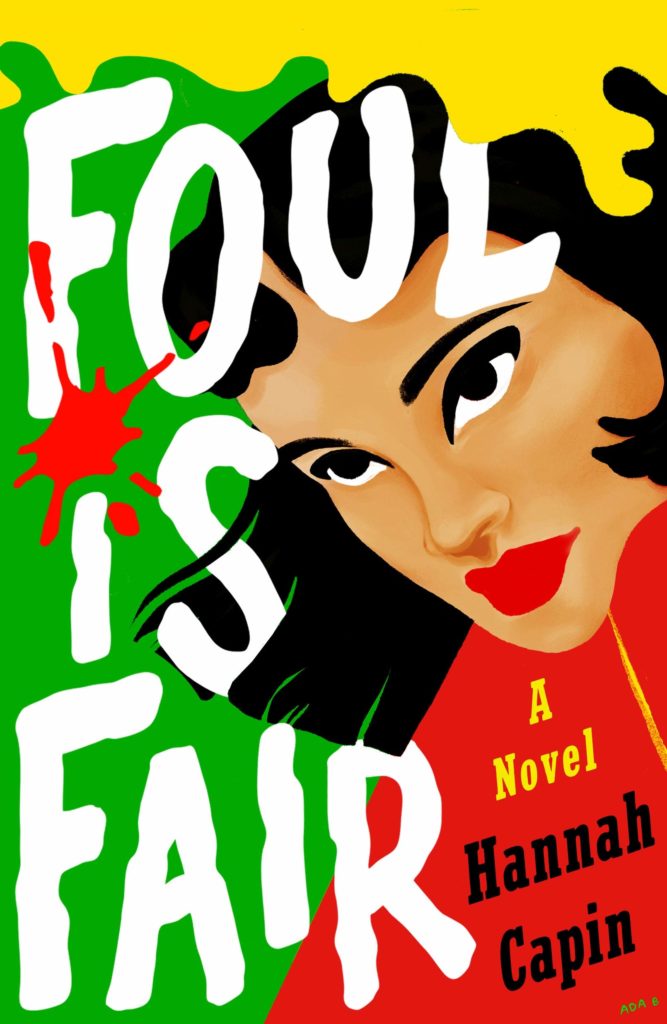I absolutely adored Foul is Fair. Such a clever and feminist re-imagining of Macbeth. I knew I had to jump on the opportunity to interview Capin on all things Shakespeare and music related! Keep reading to see my author interview with Hannah Capin on this blog tour!
Foul is Fair
Hannah Capin’s Foul is Fair is a bloody, thrilling revenge fantasy for the girls who have had enough. Golden boys beware: something wicked this way comes.
Jade and her friends Jenny, Mads, and Summer rule their glittering LA circle. Untouchable, they have the kind of power other girls only dream of. Every party is theirs and the world is at their feet. Until the night of Jade’s sweet sixteen, when they crash a St. Andrew’s Prep party. The night the golden boys choose Jade as their next target.
They picked the wrong girl.
Sworn to vengeance, Jade transfers to St. Andrew’s Prep. She plots to destroy each boy, one by one. She’ll take their power, their lives, and their control of the prep school’s hierarchy. And she and her coven have the perfect way in: a boy named Mack, whose ambition could turn deadly.
Go buy Foul is Fair!
Interview
Where did the idea for Foul is Fair come from? And what was your first experience with Macbeth/Shakespeare? Did you read Macbeth and just think, this would be better a different way.

I had a phenomenal eighth-grade English teacher (shout-out to Mr. Fraser), and we read TWELFTH NIGHT and THE TAMING OF THE SHREW in his class. He managed to make Shakespeare feel fresh and relatable. I never read MACBETH for school, but I’ve always found Lady Macbeth incredibly compelling. I love that Shakespeare created her, but I hate that he throws her out once she’s served her purpose in the plot. I wanted to place her at the center of the story, unapologetic and ruthless. And I wanted to explore the play’s themes through a 21st-century lens: MACBETH is about power, culpability, and ambition. Although the premise of FOUL IS FAIR—revenge after sexual assault—is not drawn from the play, sexual assault is also fundamentally about power, and the conversations about it quickly reveal how easy it is for rapists to rationalize their culpability. It was also really, really important to me to show a sexual assault survivor in a very powerful role: powerful both before and after the assault, neither because of nor in spite of it.
How was writing the setting for Foul is Fair? Did you have to think about a good setting which would facilitate the plot and allow your characters to pursue their ambitions – evil and otherwise?
From the start, I knew FOUL IS FAIR would take place in LA. It’s a very stylized, aesthetically driven book, and LA has exactly the vibe I wanted. I chose every character’s neighborhood (and street) carefully, since it was important to me to fit each of them into the places they belonged in their world. Setting the book at a prep school—particularly a very small, Catholic prep school—was also something I knew I would do from the very beginning. FOUL IS FAIR plays with hierarchy, tradition, and power in a way that fits with the exclusivity and ritual of its setting.
Can you tell me the first three songs that remind you of Foul is Fair?
“A little wicked,” by Valerie Broussard; “You should see me in a crown,” by Billie Eilish, and “Lolita,” by Lana Del Rey.
Go buy Foul is Fair!

About the Author

Hannah Capin is the author of Foul is Fair and The Dead Queens Club, a feminist retelling of the wives of Henry VIII. When she isn’t writing, she can be found singing, sailing, or pulling marathon gossip sessions with her girl squad. She lives in Tidewater, Virginia.